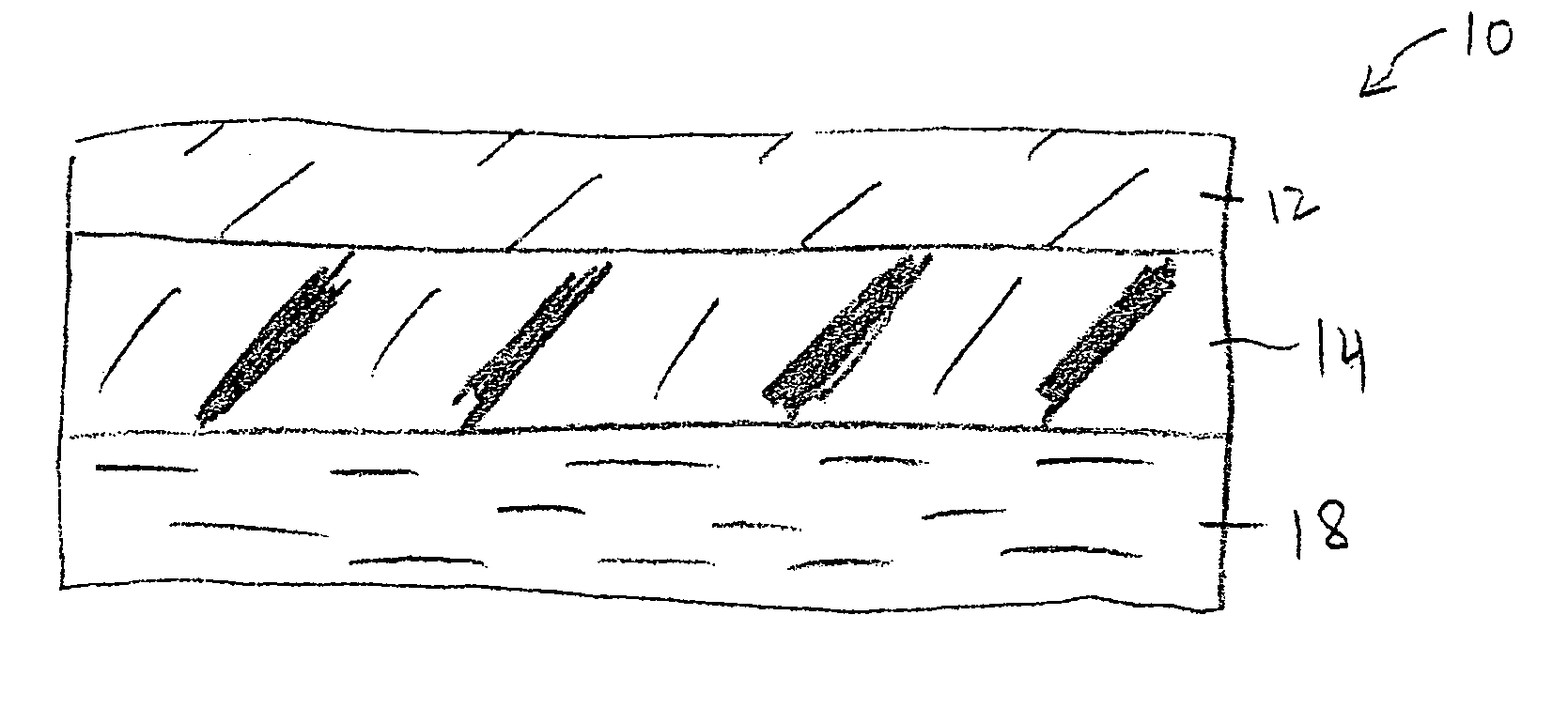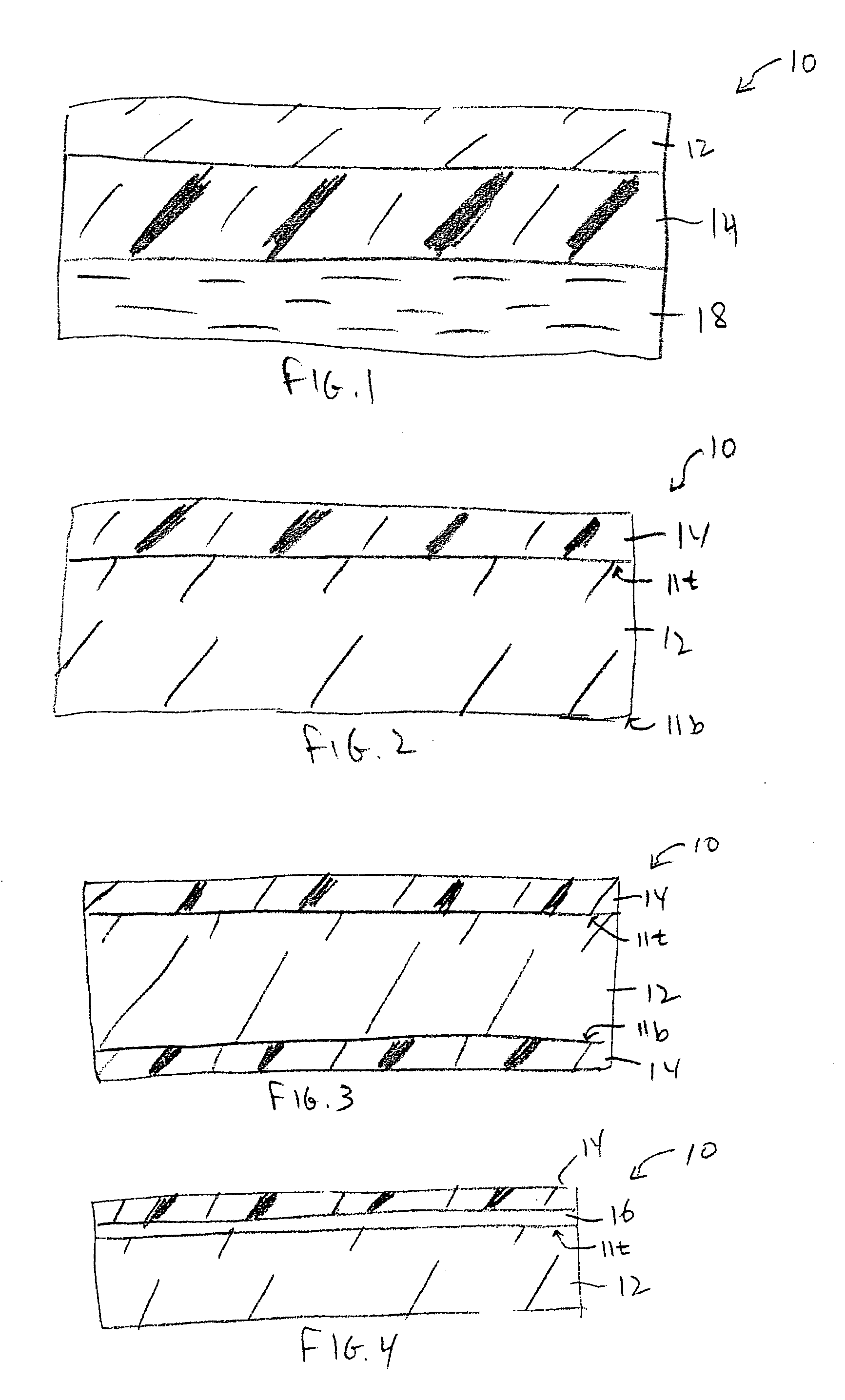Breathable non-asphaltic roofing underlayment having tailorable breathability
a non-asphaltic, breathable technology, applied in the direction of synthetic resin layered products, coatings, transportation and packaging, etc., can solve the problems of asphaltic underlayments available in the market that tend to wrinkle, high cost, and easy to be damaged, so as to improve skid resistance, improve the effect of breathability and high resistance coefficien
- Summary
- Abstract
- Description
- Claims
- Application Information
AI Technical Summary
Benefits of technology
Problems solved by technology
Method used
Image
Examples
Embodiment Construction
[0022]The present invention, which provides a non-asphaltic underlayment that is breathable, waterproof and skid resistant, and which encompasses tailorable breathability characteristics, will now be described in greater detail by referring to the following description and drawings that accompany the present application. In the accompanying drawings, like and / or corresponding elements are referred to by like reference numerals.
[0023]FIGS. 1-4 of the present application illustrate various embodiments of the present invention. Specifically, FIGS. 1-4 are cross-sectional views showing the non-asphaltic underlayment 10 of the present invention.
[0024]FIG. 1 illustrates a three-layer non-asphaltic underlayment 10 in accordance with a preferred embodiment of the present invention and which comprises a breathable thermoplastic film (BTF) 14 bonded between a substrate 12 and spun-bonded or needle-punched or other types of non-woven fabrics 18 made from polypropylene, polyester, fiberglass or...
PUM
| Property | Measurement | Unit |
|---|---|---|
| thickness | aaaaa | aaaaa |
| thick | aaaaa | aaaaa |
| moisture vapor transmission rate | aaaaa | aaaaa |
Abstract
Description
Claims
Application Information
 Login to View More
Login to View More - R&D Engineer
- R&D Manager
- IP Professional
- Industry Leading Data Capabilities
- Powerful AI technology
- Patent DNA Extraction
Browse by: Latest US Patents, China's latest patents, Technical Efficacy Thesaurus, Application Domain, Technology Topic, Popular Technical Reports.
© 2024 PatSnap. All rights reserved.Legal|Privacy policy|Modern Slavery Act Transparency Statement|Sitemap|About US| Contact US: help@patsnap.com









